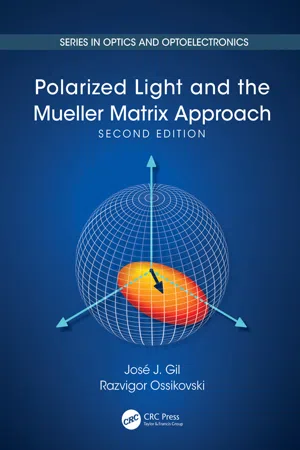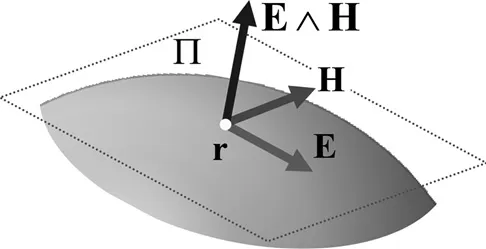
- 490 pages
- English
- ePUB (mobile friendly)
- Available on iOS & Android
Polarized Light and the Mueller Matrix Approach
About This Book
An Up-to-Date Compendium on the Physics and Mathematics of Polarization Phenomena
Now thoroughly revised, Polarized Light and the Mueller Matrix Approach cohesively integrates basic concepts of polarization phenomena from the dual viewpoints of the states of polarization of electromagnetic waves and the transformations of these states by the action of material media. Through selected examples, it also illustrates actual and potential applications in materials science, biology, and optics technology.
The book begins with the basic concepts related to two- and three-dimensional polarization states. It next describes the nondepolarizing linear transformations of the states of polarization through the Jones and Mueller-Jones approaches. The authors then discuss the forms and properties of the Jones and Mueller matrices associated with different types of nondepolarizing media, address the foundations of the Mueller matrix, and delve more deeply into the analysis of the physical parameters associated with Mueller matrices.
The authors proceed with introducing the arbitrary decomposition and other useful parallel decompositions, and compare the powerful serial decompositions of depolarizing Mueller matrices. They also analyze the general formalism and specific algebraic quantities and notions related to the concept of differential Mueller matrix. Useful approaches that provide a geometric point of view on the polarization effects exhibited by different types of media are also comprehensively described. The book concludes with a new chapter devoted to the main procedures for filtering measured Mueller matrices.
Suitable for advanced graduates and more seasoned professionals, this book covers the main aspects of polarized radiation and polarization effects of material media. It expertly combines physical and mathematical concepts with important approaches for representing media through equivalent systems composed of simple components.
Frequently asked questions
Information
1Polarized Electromagnetic Waves
1.1 Introduction: Nature of Polarized Electromagnetic Waves

Table of contents
- Cover
- Half-Title Page
- Title Page
- Copyright Page
- Dedication
- Contents
- Preface
- Preface to the second edition
- Acknowledgements
- Authors
- 1 Polarized Electromagnetic Waves
- 2 Three-Dimensional States of Polarization
- 3 Nondepolarizing Media
- 4 Nondepolarizing Media: Retarders, Diattenuators and Serial Decompositions
- 5 The Concept of Mueller Matrix
- 6 Physical Quantities in a Mueller Matrix
- 7 Parallel Decompositions of Mueller Matrices
- 8 Serial Decompositions of Depolarizing Mueller Matrices
- 9 Differential Jones and Mueller Matrices
- 10 Geometric Representation of Mueller Matrices
- 11 Filtering of Measured Mueller Matrices
- References
- Index